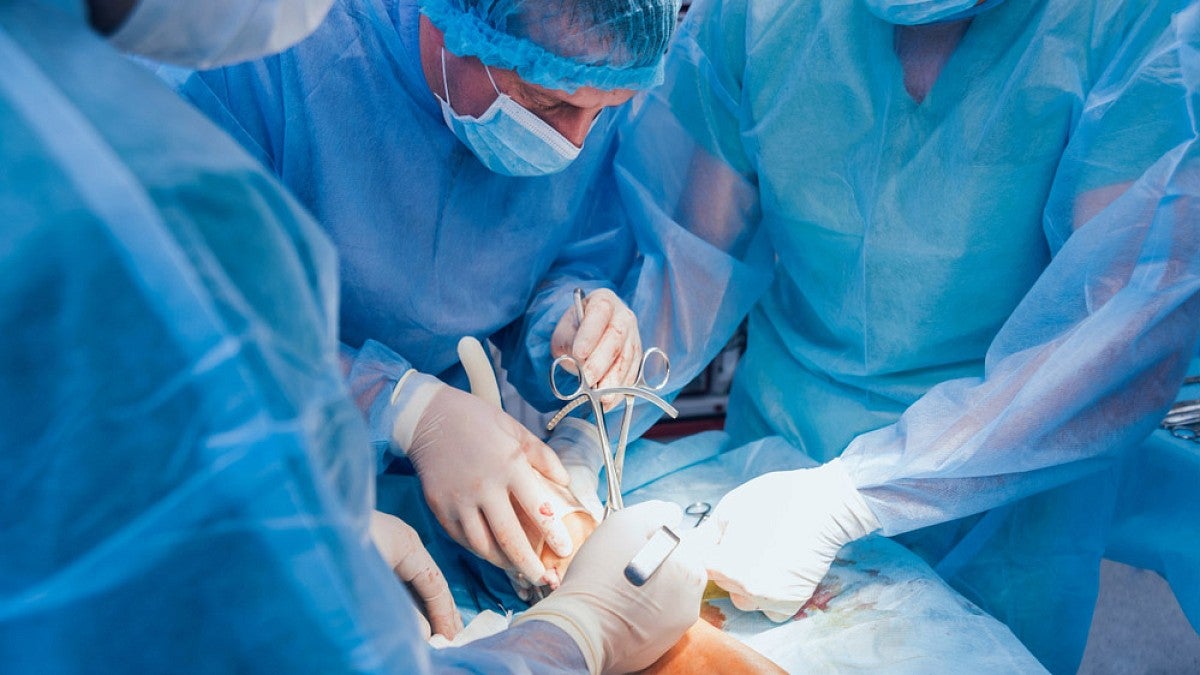If all goes as envisioned, research done at the UO could one day lead to a blood test to guide treatment for trauma victims whose bones may be slow to heal.
A team led by Robert Guldberg of the UO’s Phil and Penny Knight Campus for Accelerating Scientific Impact reported that measurements of specific immune cells and proteins circulating in the blood immediately following trauma can be combined with advanced data analytics to predict whether injuries will successfully respond to treatment. The findings were published this week in the Proceedings of the National Academy of Sciences.
In the research, the team measured the blood-based biomarkers in a rat model previously created to mimic chronic femoral bone-healing failure similar to that seen in human trauma cases.
“Our immune systems are very personalized,” said Guldberg, the Robert and Leona DeArmond Executive Director of the Knight Campus. “The identification of these dysregulated immune response profiles associated with poor healing may allow physicians to reliably predict patient outcomes and potentially open new treatment strategies.”
Guldberg was principal investigator on the project, which was supported by the U.S. Armed Forces Institute of Regenerative Medicine and done in a collaboration with researchers at Georgia Tech and Evolved Analytics.
In a series of experiments, Guldberg and colleagues ran thousands of data models on hundreds of biomarkers. They identified elevated levels of myeloid-derived suppressor cells and the immunosuppressive protein interleukin-10 as the strongest predictors of delayed and less-effective bone regeneration.
“Our studies showed that myeloid-derived suppressor cells were consistently elevated in the blood as well as the local tissue in the nonresponders to treatment, suggesting that suppression of the immune system may negatively affect musculoskeletal healing,” Guldberg said. “That opens up potential novel therapeutic targets to improve patient outcomes following traumatic injuries.”
Although standard bone fractures heal 95 percent of the time, complex fractures or trauma that damage bones and surrounding soft tissues such as muscle have higher rates of complications and often require multiple procedures before fully healing. Factors such as age or underlying conditions, Guldberg said, can increase the risk of complications, motivating the need for biomarkers that can predict patient outcomes.
Under a recently awarded $2.5 million, five-year grant from the National Institutes of Health, Guldberg will lead a team to further characterize and confirm the immune biomarkers in anticipation of a possible human clinical trial and a test of a new immunomodulation treatment strategy.
“We were quite intrigued to identify biomarkers that could be measured from the blood that correlated with local healing,” he said. “The observation that was most exciting though was that immunosuppressive biomarkers were elevated as early as one week after treatment, well before radiographs could be used to assess the progress of healing.”
A similar dysregulated immune response is seen in early stages of infections, cancer and other diseases.
Myeloid-derived suppressor cells normally activate along with other cell groups that respond to injury or a pathological condition. In turn, various proteins, such as the cytokines identified in the new paper, activate to control inflammation. Under normal conditions following injury, these compensatory responses return to normal levels.
When things go awry, Guldberg said, patients can enter a state of chronic inflammation and sustained immune suppression that appear to be associated with poor treatment outcomes. The potential to use a person’s blood profile to predict patient healing outcomes, he said, could be a real game changer for orthopedic trauma doctors.
Guldberg’s co-authors were Georgia Tech doctoral students Albert Cheng and Casey E. Vantucci, the study’s lead authors, former Georgia Tech doctoral student Marissa A. Ruehle and Georgia Tech researchers Laxminarayanan Krishnan, Levi B. Wood and Krish Roy, and Theresa Kotanchek of Evolved Analytics.
—By Jim Barlow, University Communications


